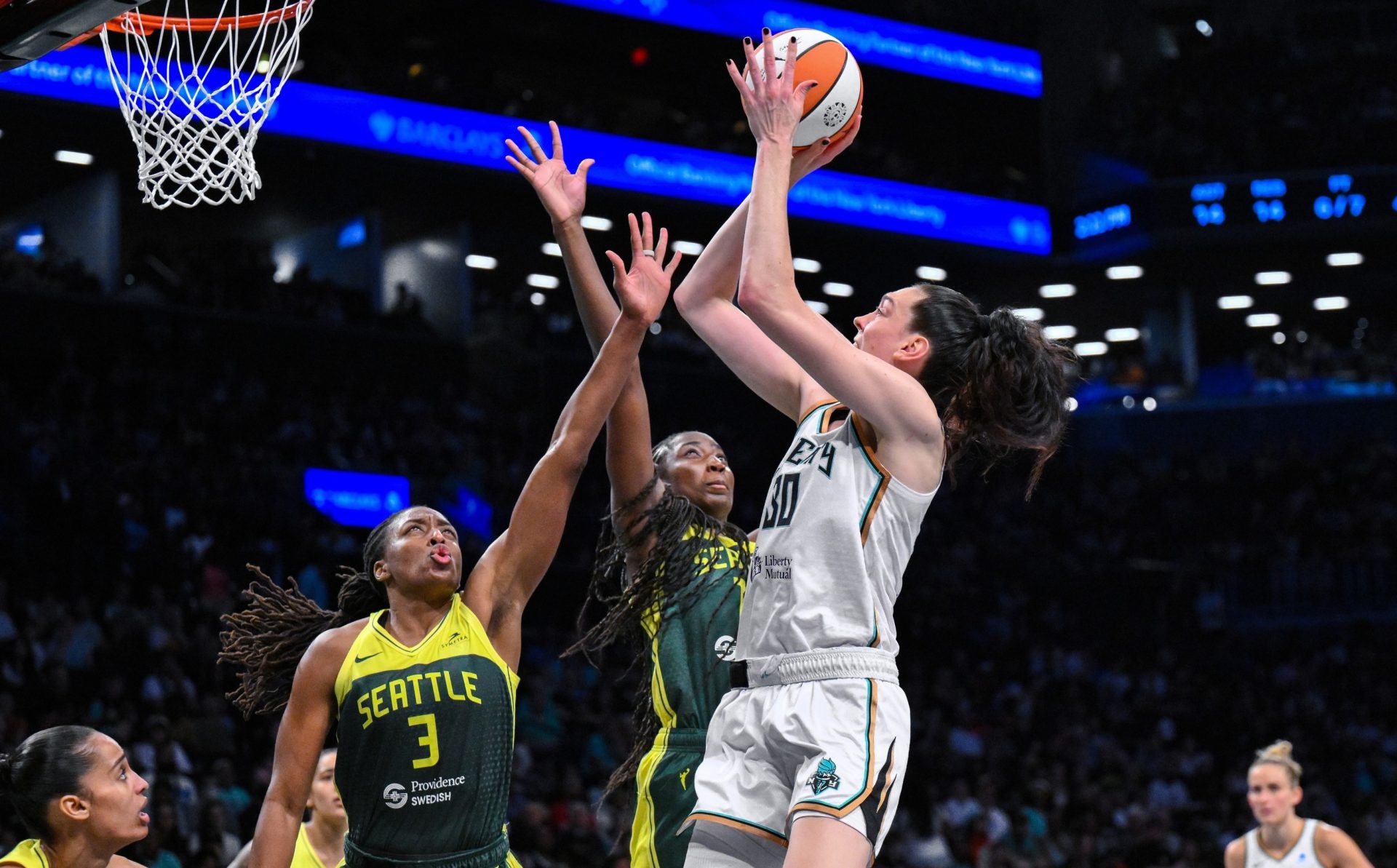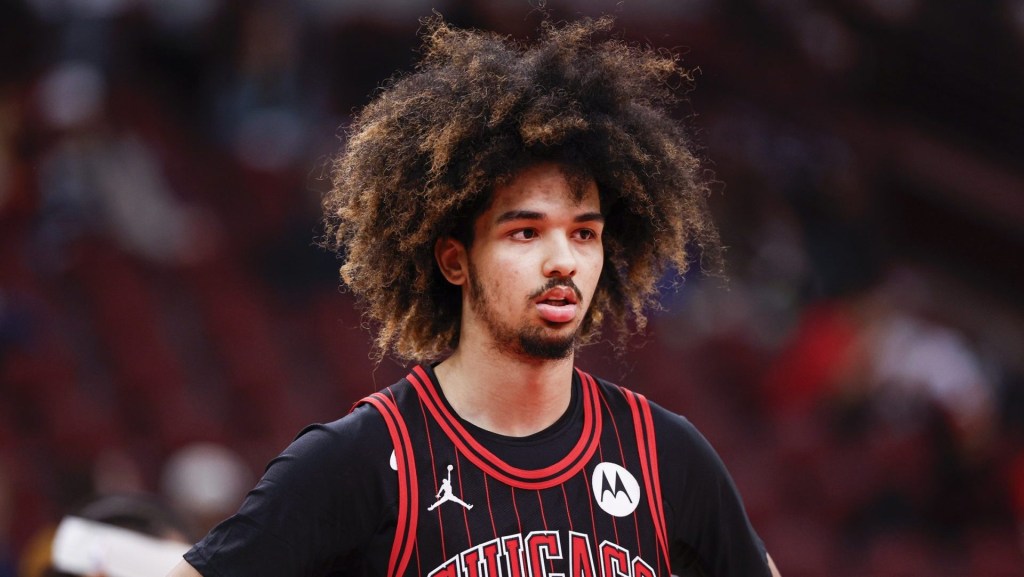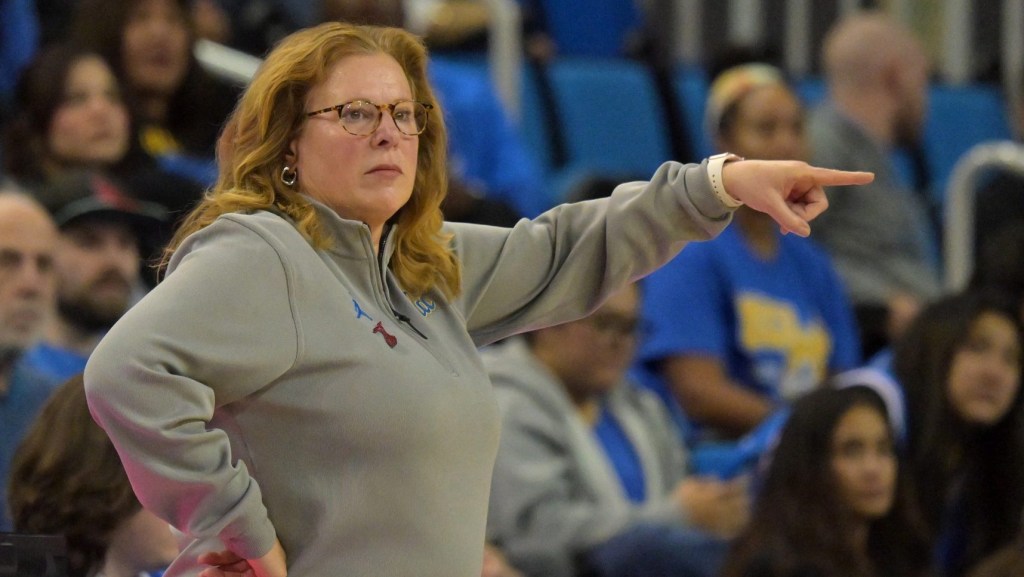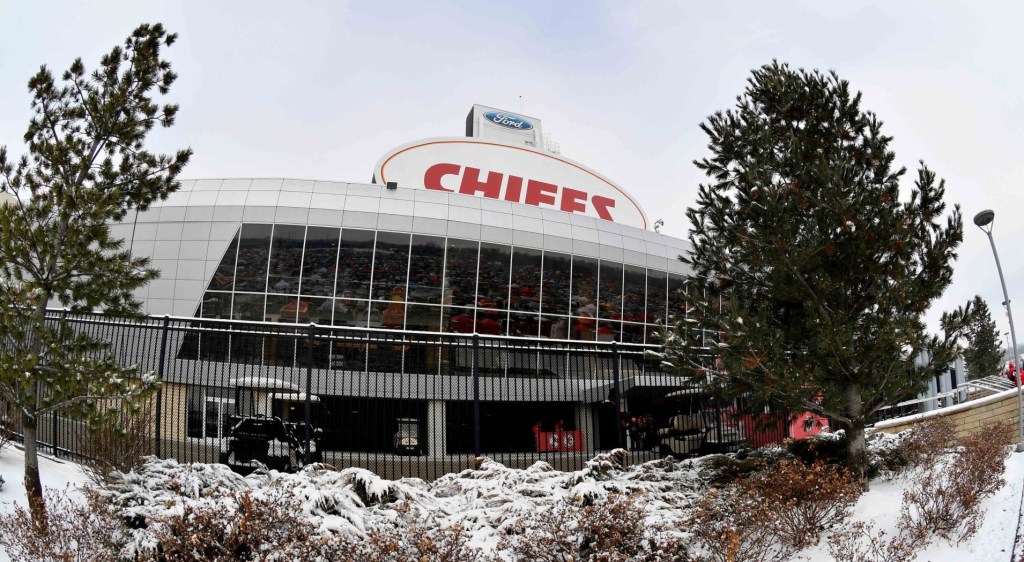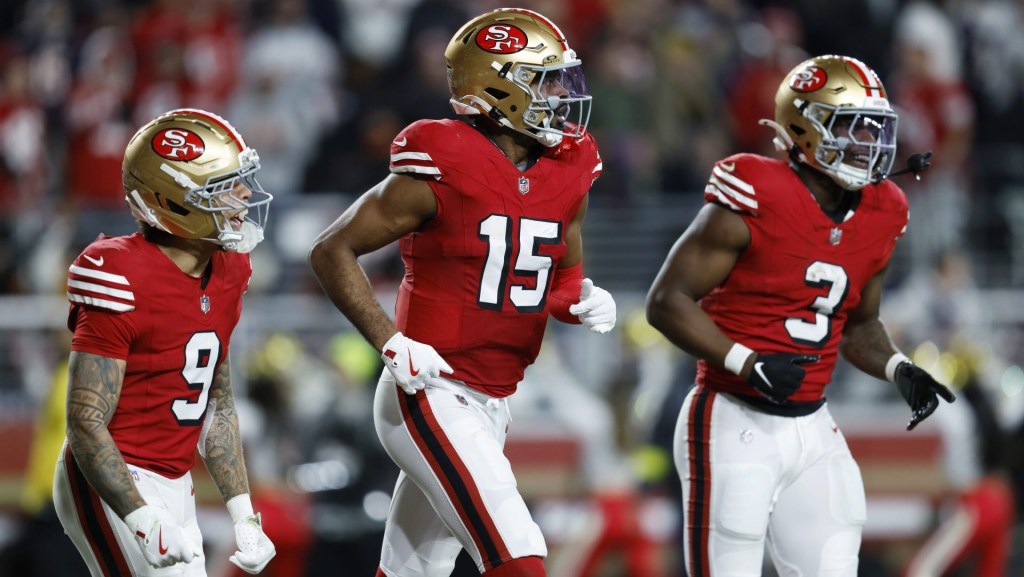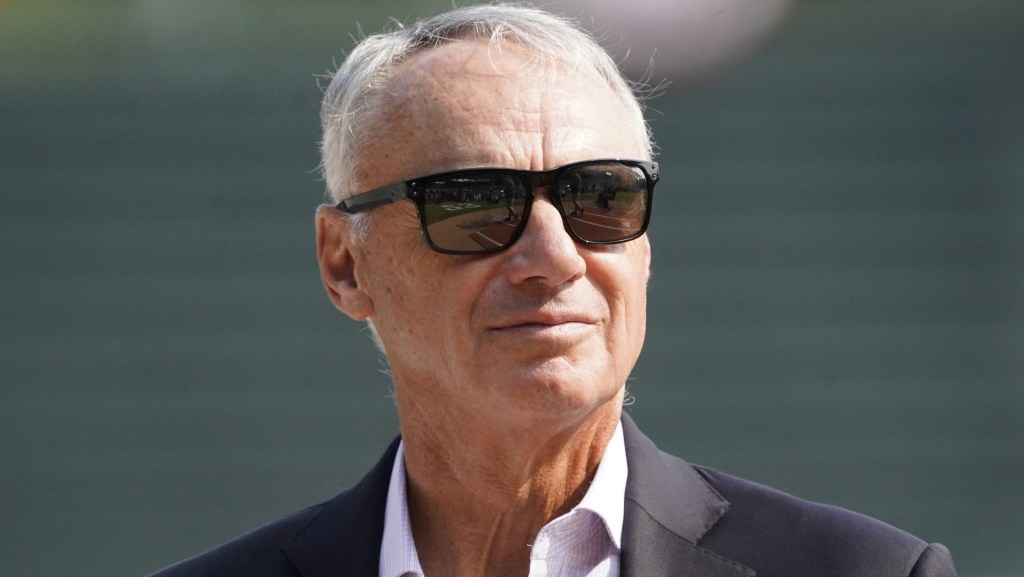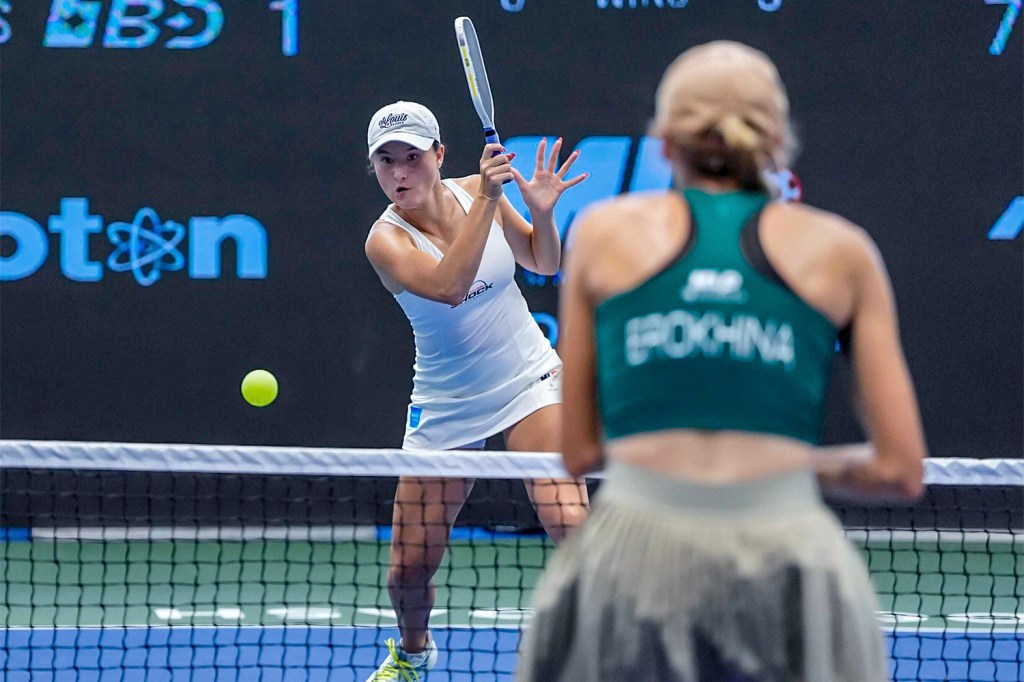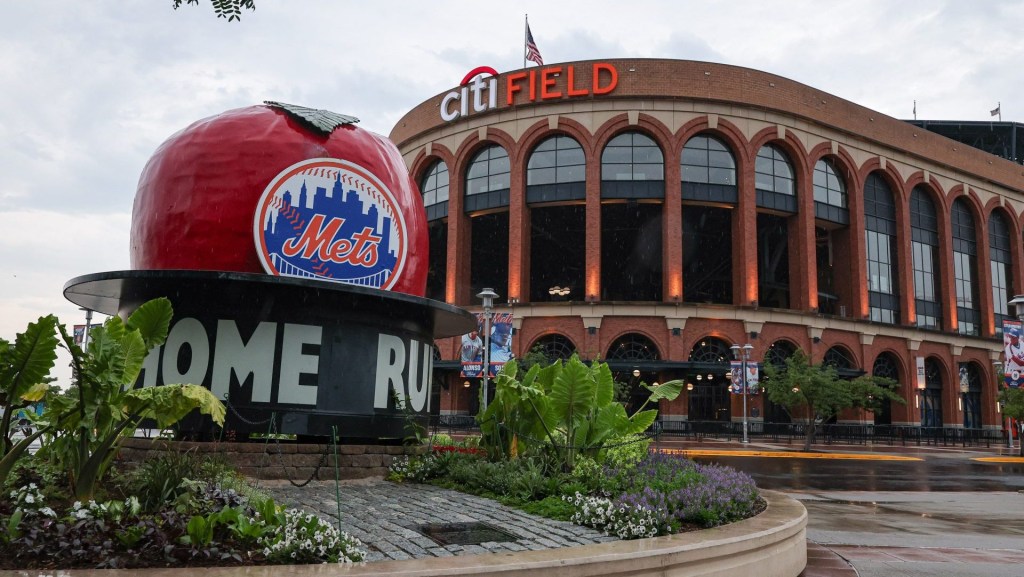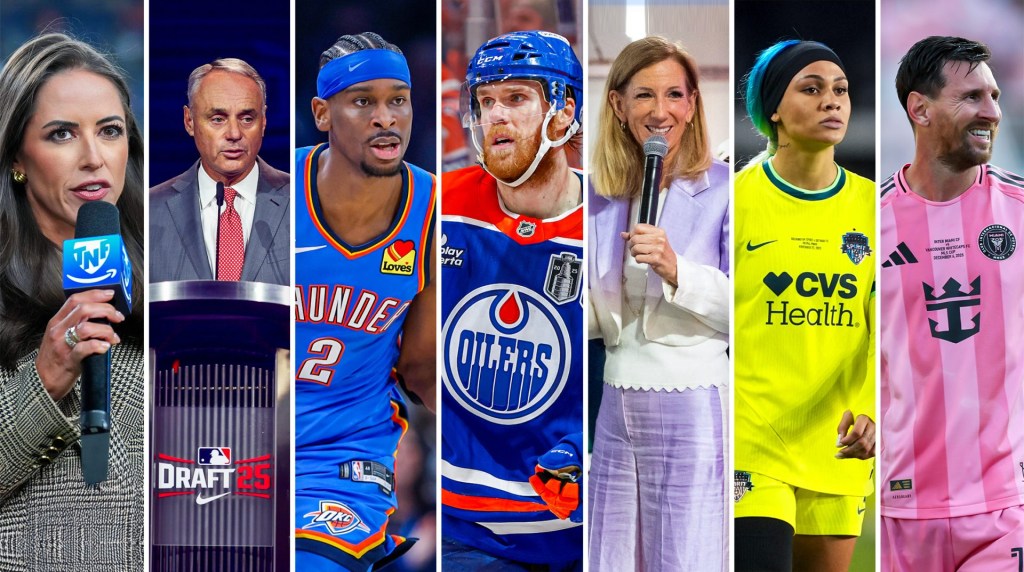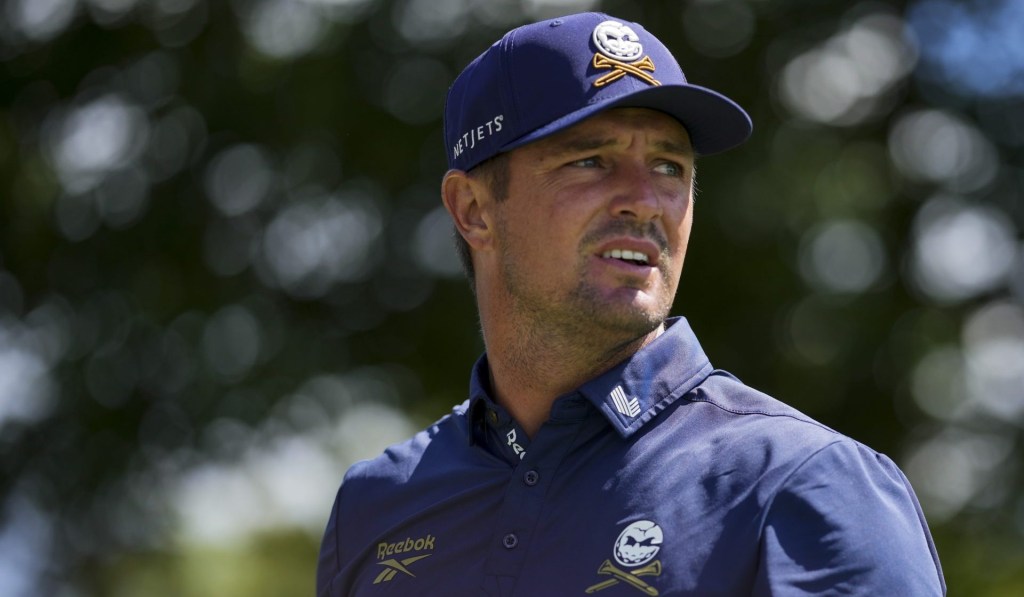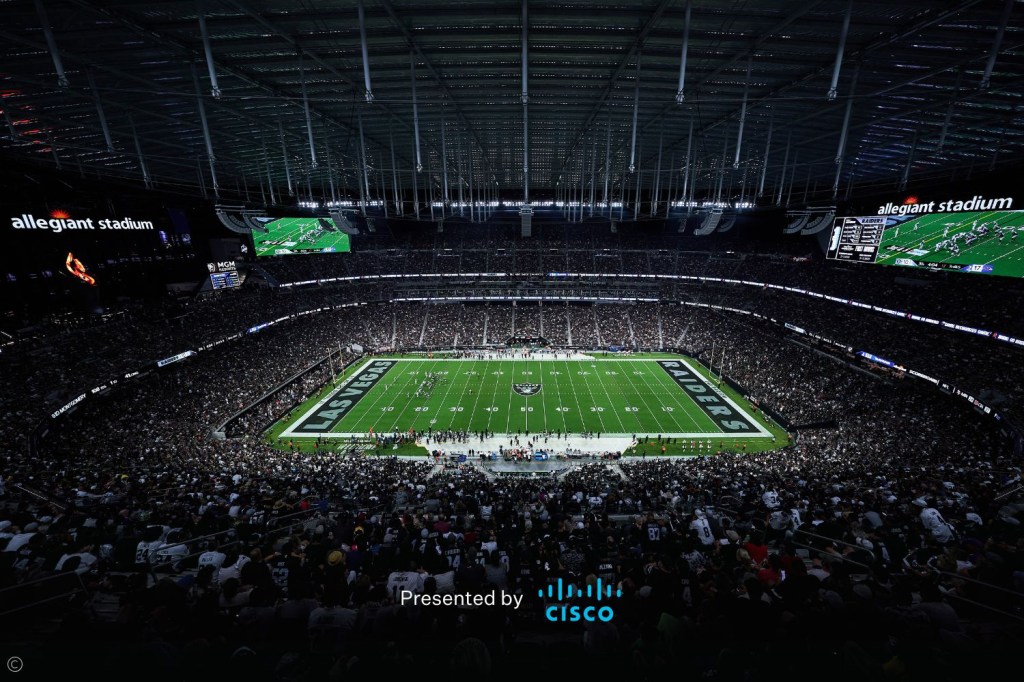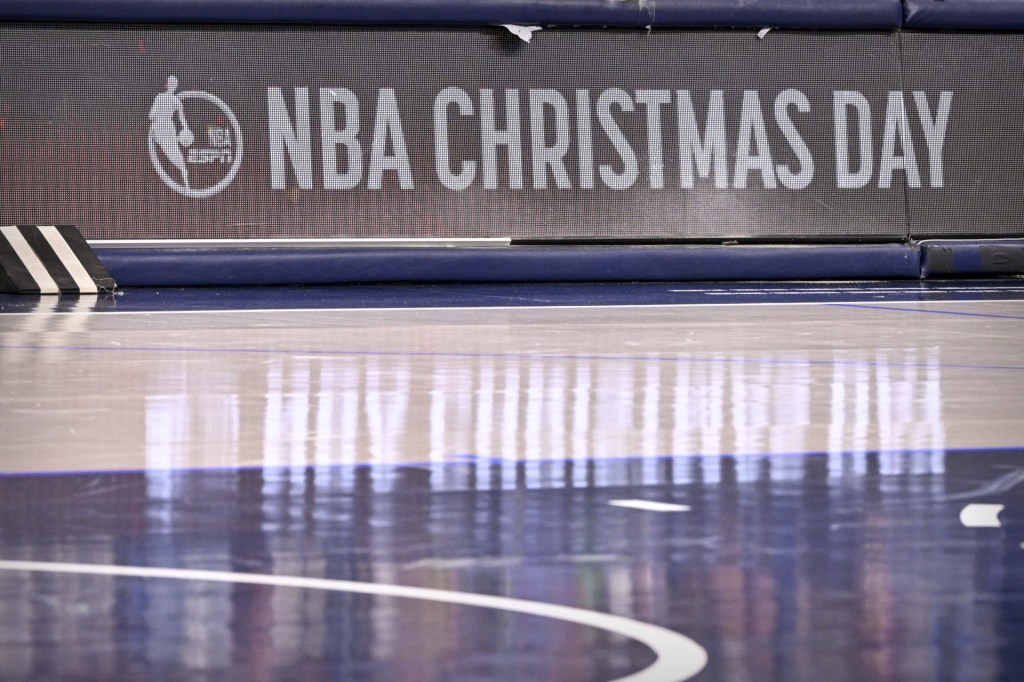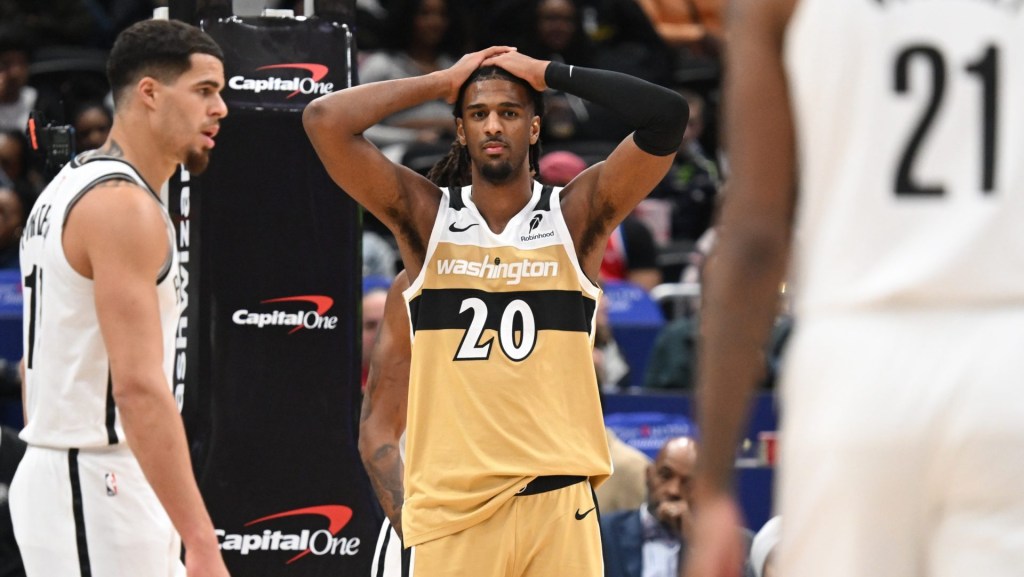The WNBA and its players are less than four months away from the October 31 expiration date of their current collective bargaining agreement, and the two sides remain at odds.
The Women’s National Basketball Player’s Association received its first counterproposal the last week of June, but it was far from anything the union would consider agreeing to, players say. The biggest gulf between the union and the league is revenue sharing.
“There were inconsistencies where we wanted to start negotiations based on what the players want when it comes to salary structure, revenue sharing, and a few other things,” union president Nneka Ogwumike told a group of reporters in Brooklyn on Saturday ahead of the Storm’s 79–70 win over the Liberty.
Commissioner Cathy Engelbert said at the WNBA draft in April that the league had only just “recently” received an official proposal from the WNBPA. However, sources close to negotiations told Front Office Sports the WNBPA submitted its first proposal the first week of February and another the last week of February.
Ogwumike said it was communicated to the union that what was originally sent wasn’t accepted as an “official proposal.”
The union “went back to the drawing board,” and resubmitted another set of proposals in the first week of April, which is what the league responded to in June. Mercury forward Satou Sabally characterized the league’s response as “a slap in the face.” WNBPA vice president Breanna Stewart said it was “pretty polar opposite” to the union’s proposal.
“It’s been made clear that there’s this perception that the players don’t understand the business,” Ogwumike said. “Cathy has told me that to my face. I communicated that to the players and I said, ‘Let’s demonstrate that we do understand the business, especially as we’re going back and forth in negotiations.’”
Ogwumike said the players are struggling with any proposals that limit players’ salaries from growing with the league’s business. The record breaking $250 million expansion fees paid by each of the new ownership groups in Cleveland, Detroit, and Philadelphia coupled with the new 11-year media rights deal valued at $2.2 billion emphasizes that the league’s explosion in popularity shows no signs of stopping.
These factors—along with record-breaking viewership and attendance numbers across the league—indicate the players’ share of revenues would fall behind if they agreed to fixed salary-cap numbers, which is what Ogwumike interpreted the league’s counterproposal to suggest.
“We want to make sure that as the business grows, the only thing that isn’t capped is the player revenue share, which ends up being salaries,” Ogwumike said.
Negotiations will continue in Indianapolis during All-Star weekend, which is July 18–19, with an in-person meeting between the union and the league.
The 10-time All-Star referenced the three prior CBA negotiations she went through saying, “each has been different.” The league’s confusion surrounding the first proposal submitted by the union coupled with their slow response time has yielded a lack of confidence for Ogwumike heading into the planned meeting in Indianapolis. However, she immediately added that past CBA discussions over All-Star weekends have been productive.
Other priorities for the WNBPA in negotiations are improved maternity benefits, a softer salary cap structure, and roster expansion.
The waiving of guard Julie Vanloo by the Golden State Valkyries and her subsequent signing by the Los Angeles Sparks highlighted why the union is pursuing increased roster sizes and changes to the salary cap. Fresh off a EuroBasket title with the Belgian national team, Vanloo flew back to the Bay Area. Upon landing, she learned she had been waived by the team.
About 24 hours later, she was on a flight to New York as she awaited to hear if she’d be awarded on waivers to the Sparks. Vanloo landed in New York in the middle of the night and checked into a hotel to get a few hours of rest before she headed to Barclays Center. She paid for the entire trip out of her own pocket.
The Valkyries waived Vanloo as they welcomed back players from EuroBasket in order to keep their roster at 12 as mandated by the league. The union is arguing for a number of potential solutions including a developmental roster spot that would give teams more leeway as they navigate injuries and midseason departures for international competitions like EuroBasket, which they are regularly up against with their summer schedule.
Implementing a luxury tax similar to the NBA is another proposal from players. The NBA’s luxury tax allows teams to pay increasingly stiff penalties in order to exceed certain thresholds. The NBA’s salary cap next season is set at $154.647 million and the tax level is $187.895 million.
The WNBA has always operated with a hard cap. The WNBA salary cap this season is $1,507,100 per team.
Under the current CBA, the salary cap has increased by a fixed rate of 3% every year beginning in 2020, meaning the salary caps for each year of the current CBA were locked in by 2020. However, this fixed increase was negotiated for at a time when the league’s business outlook was uncertain. The WNBA has promoted a rosy narrative about its business, leading to a desire from players to see their salaries rise with the league’s revenue. This is the standard model for several U.S. men’s leagues with salary caps, including the NBA and NFL, which are mandated by their collective bargaining agreements to share a percentage of revenue—about half—with players. WNBA players receive an estimated 9.3% of league revenue, according to Bloomberg.
The NBA’s salary cap will rise by 10% for the 2025-26 season.
NBA owners own 42% of the WNBA. Another 42% is owned by WNBA owners and the remaining 16% is owned by an investment group through a $75 million capital raise in 2022. Some owners have as many as three separate investments in the WNBA because they are NBA owners, WNBA owners, and part of the capital raise.
The WNBPA officially opted out of the current CBA last October, giving both sides a full year to negotiate a new contract. Eight months in, the league and its players remain at odds.
The union has emphasized it is willing to negotiate for as long as is necessary to get a “transformational” deal done and has not ruled out a work stoppage.
“From what we can tell the trends are good when it comes to the financial side of things,” Ogwumike said. “We’re not unreasonable in understanding the business for us to negotiate a CBA that reflects our value. We feel very confident in our stance and where we feel like we want to be going into the next eight years.”
The current CBA was agreed to in 2020 and would have expired after eight seasons in 2027, but players exercised their right to opt out early on October 21, 2024.
